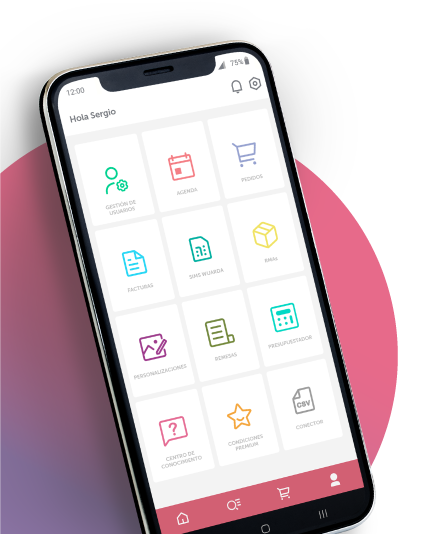It is becoming more frequent to find smart video intercom installations in residential buildings as well as office buildings. These installations are mainly distinguished by using TCP/IP technology, having WiFi devices and being able to use mobile apps to manage and monitor devices.
- External panels: these devices are placed in common areas as well as the exterior parts of buildings, or in specific indoor zones where the flow of people has to be managed and monitored. They usually have physical call buttons, one or many relay outputs and inputs for pushbuttons.

- Indoor Monitors: these devices are placed inside the households or offices. They are also usually used in sentries. They often have a touch screen to manage calls and view the external panels.

- Communication: traditional communication between plates and monitors has usually been performed through 2-wired technology. This technology, as the name implies, is formed by two parallel wires through which the power supply, audio, video and in some cases, internet connection are transmitted. Devices that are more modern communicate through TCP/IP technology with ethernet cables and switches.

- Power supply and internet connection: all the video intercom devices, whether they are plates or monitors, are powered through conventional direct current power supply. However, newer models are also PoE (Power over Ethernet) powered, which simplifies the installation cabling. Internet connection of these devices is usually used to communicate and manage them through PC softwares or, in next-generation models such as the ones presented by akuvox, communicate and manage them through a cloud platform.
Although the aforementioned features are those of modern video intercom devices, these should present certain additional specifications to be considered last-generation devices.
It is important that external plates include different identification and access methods, such as PINs, RFID cards (with EM, MF or dual technology), QR code, facial recognition or NFC and/or Bluetooth through the use of a mobile phone. Thus, these devices can be used not only as external plates for video intercoms, but also as an easy and basic access control device. It should be noted that, apart from this, there are also external plates that combine the functions of video intercoms and access control, as you can create schedules and groups to assign different individuals and show the opening records.
Another aspect to highlight is the presence of DC 12V outputs through which the buildings’ electrical door openers and/or locks can be powered. This simplifies enormously the installation because, by extending a cable from the external plate to the lock, the latter will receive power supply to fully function. This functionality is especially interesting in PoE powered systems, as it reduces the need of additional power supply.

Finally, all the external plates for large buildings that are considered modern and state-of-the-art, have to incorporate a screen to show, easily and intuitively, the contacts of the residents or workers that are on the installation. In this way, there is no need to place a physical directory next to the external panel, unifying the whole device visually and with an easy access.
As for indoor monitors, viewing and operating the external plate is an essential feature for these devices, as it is their inherent function, but at the same time it is not enough if they are only limited to this function. Nowadays, in a world where electronic devices are closely communicated, the devices forming a security system are not an exception. For this reason, monitors should include the possibility to visualize video surveillance cameras linked to the installation through RTSP and/or ONVIF.
These devices should also have many alarm inputs and outputs, for many purposes. However said ports are used largely to connect them to small systems of domestic intrusion that can be managed easily. Some monitor models present features of management of these intrusion systems already implemented.
Apart from what was mentioned above, home automation is another growing aspect, which is becoming more and more frequent daily, both in households as well as in offices. Devices comprised within this category are usually managed and controlled through mobile apps based on Android OS. At the same time, these devices are communicated with the mobile phone through Wi-Fi or Bluetooth. For this reason, last-generation indoor monitors implement Android OS, which can install third-party apps, such as Ajax Systems or Tuya Smart, enabling the management of home automation devices, as well as Wi-Fi and Bluetooth to communicate with said devices.

A key aspect of last-generation video intercom devices is the possibility of managing them wherever and whenever, through the manufacturer’s proprietary mobile app. For this, a Cloud-based service is needed. Akuvox has one of the most powerful and trust-worthy cloud-based management and installation services in the market, which can not only monitor these devices, but also manage and configure them remotely.
In conclusion, Visiotech’s new cutting-edge video intercom devices are the best choice to equip residential and office buildings with the most modern technology and accessibility, offering an unbeatable price and top-quality.


 Login
Login








